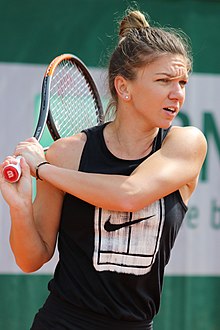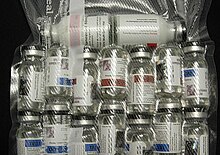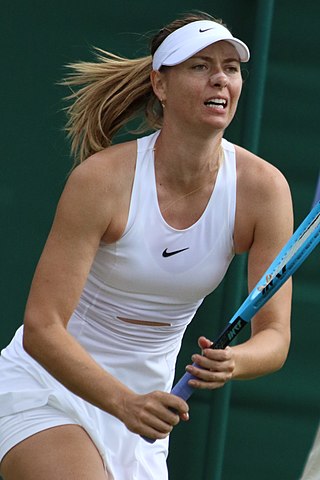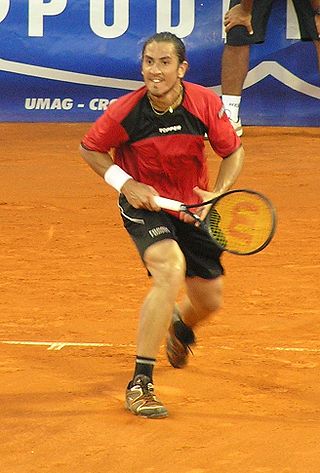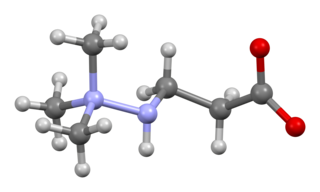Doping in men's tennis
Cases on the ATP Tour include:
Andre Agassi (1997)
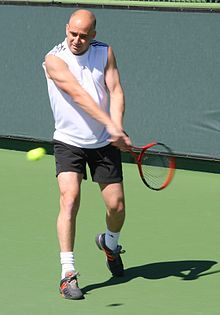
In 1997, Andre Agassi returned a positive drug test for the use of methamphetamine. A joint investigation carried out by the World Anti-Doping Agency (WADA) and Association of Tennis Professionals (ATP World Tour) handed down a three-month suspension from professional tennis for the incident. However, the punishment was not formally handed down after Agassi blamed the positive result on a spiked drink.
Agassi's case was revisited in 2009 following the publication of Agassi's autobiography, Open: An Autobiography, where Agassi admitted to lying about the cause of his positive drug test result. Agassi admitted that he became addicted to methamphetamine during 1997 after his assistant introduced him to the drug and he faced both personal and professional problems. [4]
Following the admission, no formal case has been opened against Agassi as the offence was committed prior to the establishment of the World-Anti Doping Agency in 1999 and the International Tennis Federation's (ITF) formal takeover of the ATP World Tour's anti-doping program since 2007. [4]
Richard Gasquet (2009)
In 2009, Richard Gasquet returned a positive drug result for cocaine use. Gasquet denied intentional use of the drug, citing that he may have been exposed to the substance after kissing a female at a Miami nightclub (known in the media as "The Cocaine Kiss Controversy"). [5]

The International Tennis Federation (ITF) and the World Anti-Doping Agency were initially seeking a two-year ban because of the substance used in the incident. Due to Gasquet's denial, and the small amount of cocaine detected, Gasquet initially received a one-year ban. However, this was overturned following an independent review that found the case was unintentional. [6] The ITF and WADA challenged the ruling in the Court of Arbitration for Sport but were unsuccessful.
Consequently, Gasquet received a formal six-week ban that came into effect in May 2009 to July 2009, which prevented him from competing in the French Open or Wimbledon. During this period his professional ranking fell nine places. [5] This was the only punishment enforced by governing authorities, with no prize money fine or forfeiture of ranking being imposed. An independent tribunal ruled that Gasquet had not intentionally consumed the substance, that it was not performance-enhancing, and that he would have consumed the bare minimum amount to be detected. [7]
In January 2010, the Court of Arbitration for Sport found Gasquet not guilty of a doping offence and he returned to professional tennis following the ban at the Australian Open in 2010. [8]
Marin Čilić (2013)
In 2013, Marin Čilić returned a positive drug test for the substance nikethamide. The drug is a widely used stimulant that affects respiratory function through the increase in blood flow and oxygen intake within the body. [9]

Čilić denied having deliberately taken the drug, stating that the substance was contained in glucose tablets that were purchased from a pharmacy while he was competing in France. [10] The International Tennis Federation (ITF) recognised Cilic's claim and did not hand down the regular two-year professional ban for instances of illegal doping. Instead, he received a nine-month ban due to the low level of the drug that was detected and the contextual circumstances.
The initial ban would have prevented Čilić from competing in the 2013 US Open and the 2014 Australian Open with the suspension period extending from May 1, 2013, to January 31, 2014. [10] However, following a successful appeal to the Court of Arbitration for Sport, Čilić's nine-month ban was reduced to four months, with a retrospective provisioning period recognising time already spent away from the game. The ruling also resulted in the return of Čilić's prize money and ATP World Tour points from the 2013 French Open, 2013 Wimbledon and 2013 BMW Open where he tested positive to nikethamide. [11]
Cilic returned to the professional tennis circuit on 25 October 2013. [11]
Viktor Troicki (2013)
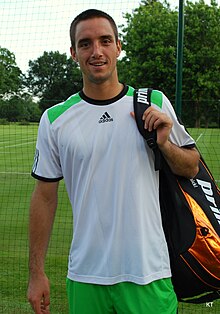
In 2013, Viktor Troicki refused to partake in a mandatory blood test carried out by the International Tennis Federation (ITF). As part of the 2013 anti-doping program administered by the governing body, it is compulsory that when requested by ITF staff, that players provide in and/or out-of-competition blood and urine testing. [12] While it is possible for players to ask to be excused from such test, it is at the discretion of the ITF to postpone such tests.
Troicki stated he did not agree to the blood test as he was sick when the test was ordered by the ITF, however, he did provide the mandatory urine sample. [13] In conjunction with his illness, Troicki also suffers from a phobia of needles that makes such tests difficult to administer. [14] Having refused Troicki's claim, the ITF handed down an 18-month ban due to the failure to comply with the organisations anti-doping regulations. [15] The initial ban prevented Troicki from competing professionally on the ITF Challenger or ATP World Tour from 26 July 2013 until 24 January 2015, missing the 2013 US Open, all the 2014 Grand Slams and 2015 Australian Open. [16] The punishment also enforced the forfeiture of all ATP World Tour points and prize money received at the 2013 Monte Carlo Masters tennis tournament where he refused to participate in the blood test.
Troicki appealed the sentence to the Court of Arbitration for Sport in October 2013 and was successful in having his ban reduced by 6 months from 18 to a total 12-month ban. The new sentence prevented Troicki from competing professionally from 26 July 2013 to 26 July 2014 with the sentence recognising time already spent suspended from the game. [17]
Troicki returned to professional tennis in July 2014 at a world ranking of 847 that prevented him from returning to the ATP World Tour. He returned to tournaments on the International Tennis Federation's Challenger circuit. [18]



